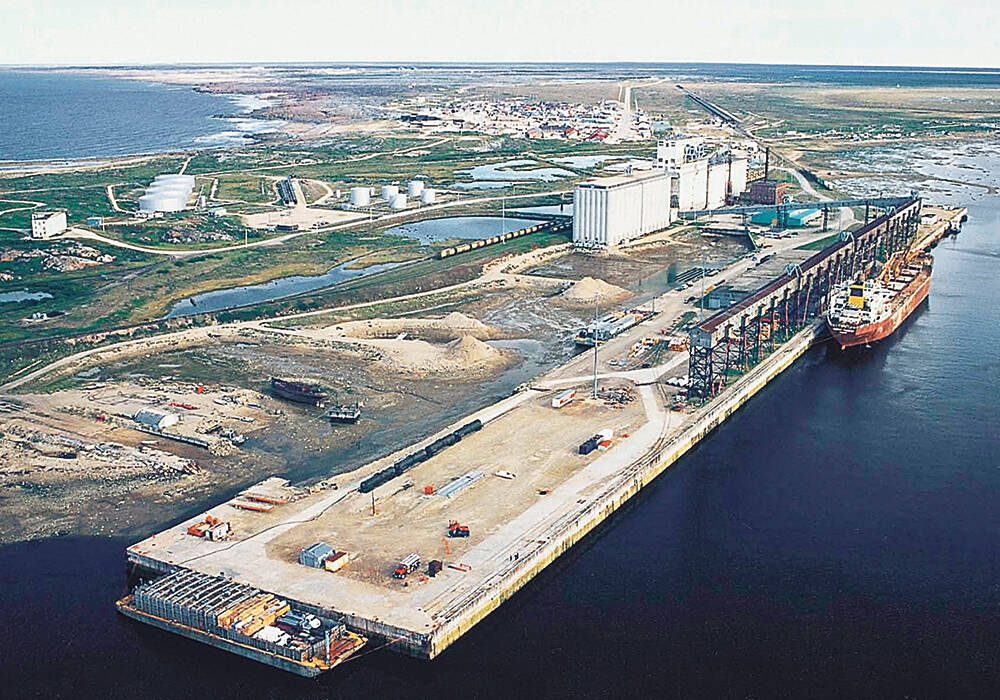On the face of it, pouring another $80 million into reinvigorating the Port of Churchill is illogical. But as events of recent weeks underscore, we’re living in an illogical world.
To be clear: the vision behind the creation of Canada’s Arctic tidewater port serviced by rail always made sense for national sovereignty. There’s just something about the image of a grain terminal framed against the northern skyline and a rocky coast frequented by polar bears that says “Canada.”
Economically, however, it’s always been a tough sell. The port is small by today’s standards and only open four months per year. The railway supporting it is high maintenance and the grain business, which has historically been its main source of shipping revenue, has fundamentally changed.
Read Also

Port of Churchill searches for year-round trade
Climate change is keeping sea lanes open longer at the Port of Churchill, speaker says, and that might boost plans to expand the scope of Manitoba’s deep-water Arctic seaport
Nothing about this port has been easy. Even its location remains controversial. For a host of reasons — politics, money shortages, silty harbours and delays caused by the First World War — the Hudson Bay Railway heads northeast from Gillam, pointing directly towards Port Nelson as per the original plan, but then takes a sharp left turn to track north through boreal forests and boggy tundra to the Port of Churchill.
When it opened in 1931, it initially faced crippling skepticism from the shipping industry, fearful of the northern passage.
Business didn’t start to pick up until E. Cora Hind, the first female Free Press reporter and whose writing helped put Prairie wheat on the global map, used her celebrity status to champion the cause. She accompanied a load of grain from Churchill to England, which was big news for the times.
“She is the greatest prophet in the world: Fortunes and the future of great industries are affected by her forecasts,” reported the London Sunday Express upon her arrival in October 1932. “Her prophecies are eagerly awaited by government experts, grain traders, transportation companies, insurance houses, banks and manufacturers for they affect the price of wheat, the cost of bread and the purchasing power of Canada.”
The newspaper accounts may have focused on her, but her support lent the port needed credibility, and its prospects incubated in the glow.
However, it could be argued that it only worked as a grain export port because of the Canadian Wheat Board — not because the board subsidized it, as was often alleged, but because the board could manage supply. The single-desk marketing system allowed it to collect grain from the central and northern Prairies and fill the northern terminal before winter so that it was ready to load when the first ships arrived late July.
Exporting grain out of that catchment area through the North was cost-effective — although on at least one occasion it led to customer complaints after dockworkers in India unloading the first ship of the season got frostbite from handling frozen grain. They thought it was chemical burns.
Successive attempts by governments to turn the port and the railway over to private enterprise have so far failed.
The CWB was dismantled in 2012. The export customer base has changed, while the private grain trade has their own inland and port investments elsewhere to protect. Plus, as much as global warming may expand the ice-free shipping window, it also adds to the railway’s instability.
The port’s fate appeared sealed in 2017 when the railbed suffered extensive washouts and its American owner, Omnitrax, decided to close it rather than repair.
Enter Arctic Gateway Group, a consortium of 41 First Nations and northern communities, who stepped up to save the region’s only land link to the south.
Churchill’s modern-day proponents believe that there are new export-import opportunities emerging in mining and fertilizer in addition to the port’s vital role in northern resupply.
Whether or not these pan out, at a time when Canada’s sovereignty is threatened and global powers outside our borders are making new territorial claims, government investment in our iconic northern port sends an important signal.
However, unlike booing the Star Spangled Banner at hockey games, this expression of our nation’s sovereignty has demonstrated it requires the public’s ongoing commitment if it is to survive.
The Port of Churchill exists because the leaders of our past dared to look beyond the impracticalities and latest public opinion polls to dream big. It survived the past century because of its champions.
Now, more than ever, Canada needs big dreamers and champions.
















